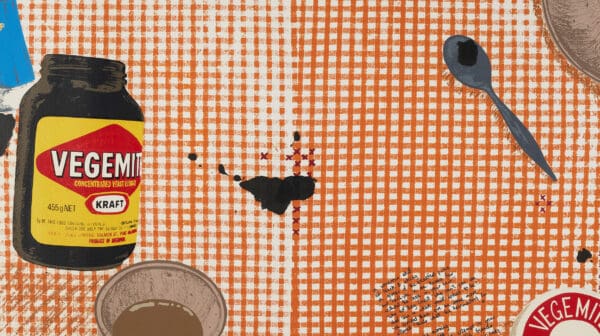
Reframing a Collection
Drawn from the Cruthers Collection of Women’s Art at the University of Western Australia (UWA), Lawrence Wilson Art Gallery’s show Place Makers, reframes the artists—who just happen to be female.

Greg Semu, Auto Portrait with 12 Disciples (from the series The Last Cannibal Supper, Cause Tomorrow We Become Christians) (detail), 2010 Digital C-Type print
100 x 286 cm. Collection: Arthur Roe, Melbourne © Greg Semu & Alcaston Gallery, Melbourne.
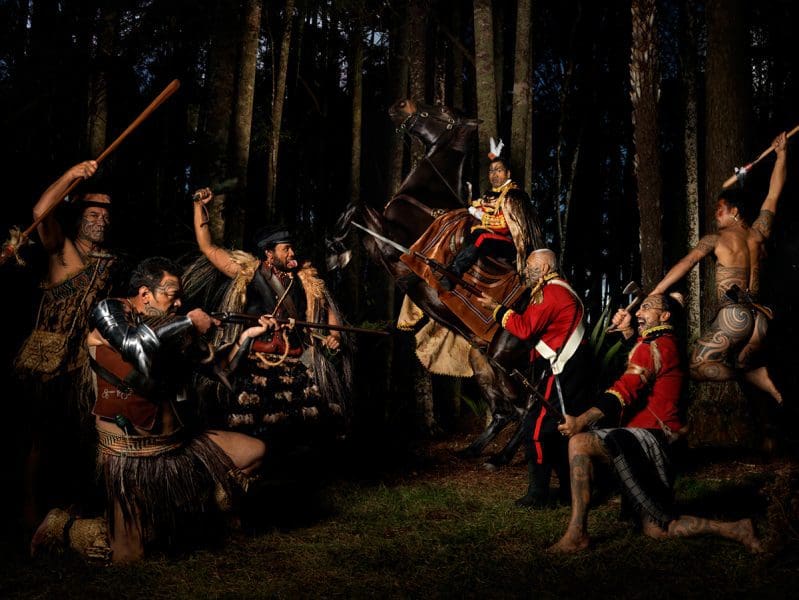
Greg Semu, Auto Portrait with 12 Disciples (from the series The Last Cannibal Supper, Cause Tomorrow We Become Christians), 2010, Digital C-Type print, 100 x 286 cm. Collection: Arthur Roe, Melbourne © Greg Semu and Alcaston Gallery, Melbourne.
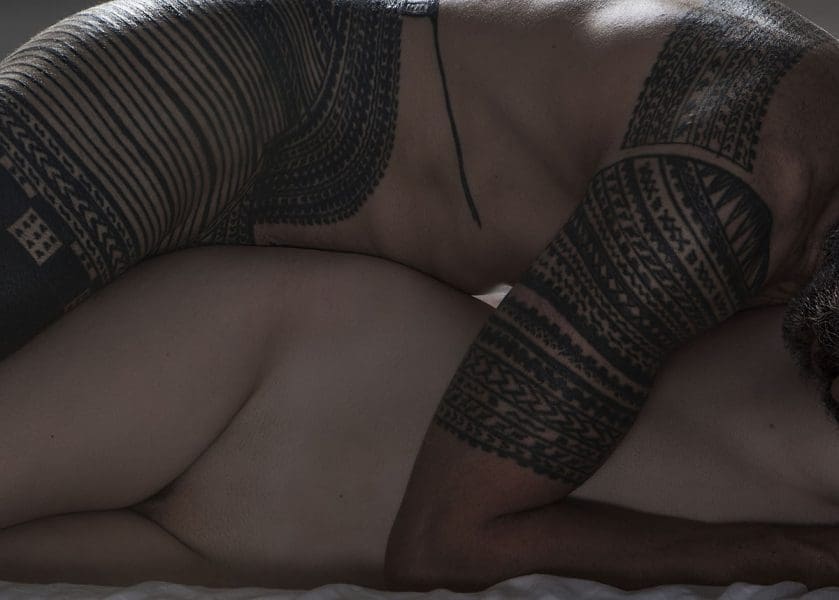
Greg Semu, Two Bodies, Two Landscapes – Zwei Körper, Zwei Landschaften #1, 2015, Pigment print on Hahnemühle, 75 x 105 cm. Collection: Konfir Kabo, Melbourne © Greg Semu and Alcaston Gallery, Melbourne.
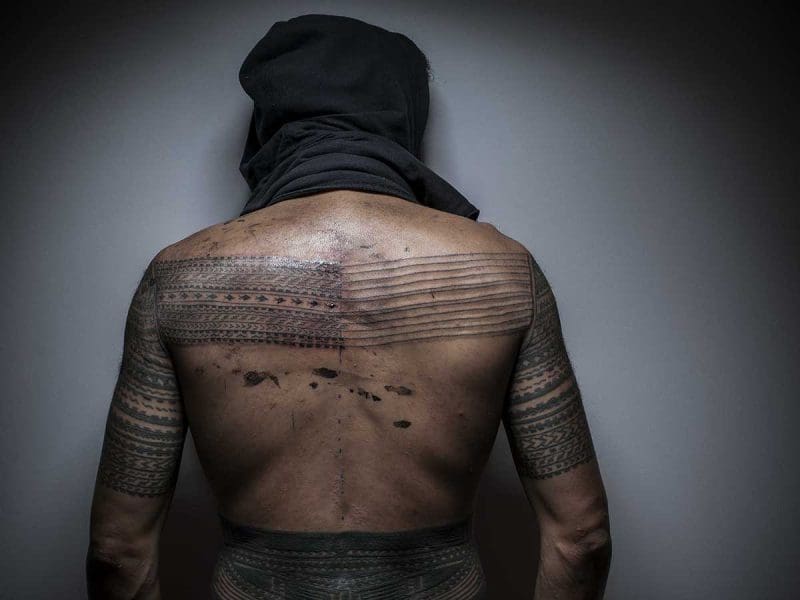
Greg Semu, Earning My Stripes #2, 2015, Pigment print on Hanemühle photo baryta Edition 1 of 10, 100 x 133.4 cm. Collection: Gene & Brian Sherman, Sydney © Greg Semu and Alcaston Gallery, Melbourne.

Auto portrait with faux diamond eye lash, Berlin 2015.
Greg Semu fuses the old and the new. His costumed actors and models pose in reference to historical paintings promulgating Christian iconography as well as Semu’s ancestral and spiritual home of Samoa, in still images with distinctly postcolonial historical twists.
Yet despite the richness of these tableaux, Auckland-born Semu considers his photography more artisan craft than art. Now based in Sydney, Semu sits in a café around the corner from the Sherman Contemporary Art Foundation (SCAF) where institutional and private collections of his work from the past 20-plus years are being gathered for a retrospective exhibition, the sixth iteration of SCAF’s Collection+ series.
One new work, inspired by a 16th century painting (German-born Hans Holbein the Younger’s The Body of the Dead Christ in the Tomb) will also be displayed.
“I’m deeply indoctrinated in Christian mythology,” Semu explains, laughing. “The family I grew up with are three or four generations heavily indoctrinated in a Christian-based religion.” Is he of that faith? “It’s become more ambiguous for me, spirituality. Christian mythology, it’s a rhetoric; it’s storytelling. The story of Christ is like Romeo and Juliet; it’s like doing Shakespeare.”
Semu wears a black waistcoat and white collared shirt with the sleeves cut away, revealing tattoos up his arms. Being inked, he notes, is a ceremonial birth right of Samoan men and a religious covenant. Fifty per cent of his body is tattooed. “It’s a trial of pain, you bleed, and a covenant you make with yourself, your family. Technically, it’s the passport for the next life,” he says. “You have to go through the pain to get beauty.”
How do tattoos, prominently featured in his photographs, connect to the Christian iconography? “It’s about personalising the work, but also a silent protest. Christianity is, like, roughly 2000 years old. The Samoan tattoo is 3000 to 5000,” says Semu. “The word tattoo comes from ‘tatau’, which generically is a Polynesian word, but I’d say Samoa owns it. We can say we invented contemporary tattooing.”
He comments on the migration of Samoans to New Zealand during the 1950-1970s. “Basically, we were low-wage slaves,” he says. “We were welcomed to work, then after that, we were not so welcome.” His parents, both born in Samoa, returned there. “I’m first-generation New Zealand-born. I didn’t actually grow up with my biological parents. I’ve been there [to Samoa] a number of times.”

Semu’s speech patterns are rhythmic, and he coolly repeats his points, while building layers of story with each repetition. He laughs a lot. He has a moustache twirled at the ends, and a very large safety pin through his tie. He looks fabulously stylish, although insists he lives frugally, having spent a decade working in Paris, when he could barely make ends meet. “My years in Paris were probably the most difficult of my life. I went there originally for five days. It was 10 years of financial crisis,” he explains. “I was, what do they say, émigré clandestine; I was an illegal immigrant, you know?”
What kept him there? He stirs his coffee. “First it was for art; I made money [with some more commercial work]. Then it was love, and then finally it [the city] was an addiction. The money ran out; disappeared. The love story crashed and burned,” he recalls. “I thought I was in love with this woman, but I was actually in love with Paris. It’s a first world metropolis, and yet its primary goal is not money. Its number one goal is life, family, food, then money. In New York [where Semu previously lived for three years] and Sydney, primary goal number one is money.”
He’s happy to be in Australia, he realises, but soon became aware that, despite training in film and television work in New Zealand, he couldn’t fall back easily on past commercial work. “Australia doesn’t need another fashion photographer,” he chuckles.
“I actually don’t think of photography as an art form,” he says, surprisingly. “I think of it more as a craft. I feel like a tradie, you know? For years, I was classified as an art photographer, and when I had a commercial client, they’d be like: ‘Is it going to be in focus?’,” he laughs.
Working with indigenous actors and models has been important to Semu’s art and politics, whether it be his fellow Pacific islanders in New Zealand and the Cook Islands, indigenous people of Thailand and Kanaks in New Caledonia, or remote Indigenous Australian communities at Galiwin’ku or Elcho Island in the Northern Territory and far north Queensland. His forthcoming work will examine Aboriginal deaths in custody. Semu sees paying these actors and models, however small the amount, as essential to their professional bearing and self-determination. “It’s a collective effort,” he says.
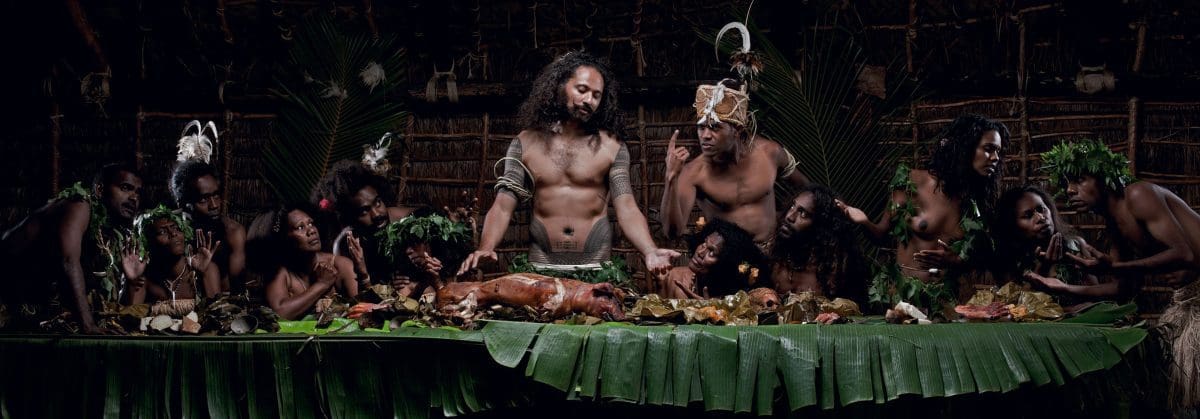
The romance of the “poor, starving” artist is a “myth’, he insists. “In the beginning, as a young person, I was very tortured. A lot of my early works are very painful works. Then I realised, if I kept following this path, I was going to end up dead. I was being suicidal. Then I realised, ‘If this is what you need to do to make work, then you need to choose another way’.”
He’s not trying to push an agenda, he says, but a conversation. “Let’s talk about equality, and religious and political colonisation. Let’s not talk about it with anger, but let’s talk about it because it’s happened, it’s deeply entrenched in our past, it’s highly unlikely it will de-entangle for our future, so let’s participate.”
Collection+: Greg Semu
Sherman Contemporary Art Foundation
7 October – 10 December